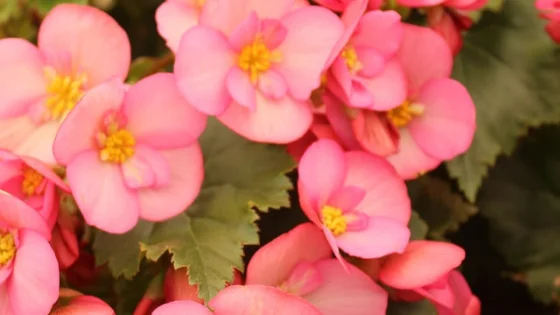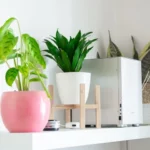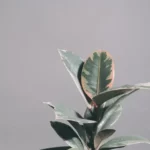Table of Contents
How to Care for Rieger begonia
Rieger begonia are known for their delicate winter blooms, in colors such as red, pink, yellow and white. The plants are also known by the names, Hiemalis begonias, Veitchii begonias and Elatior begonias.
All of these names are for plants that were actually invented in 1883 by an English botanist, James Veitch, who crossbred an East African begonia with a South American begonia.
Though these plants are often grown as disposable annuals, they actually make great houseplants and can be enjoyed year-round until they bloom again in the fall.
What Does Your Rieger begonia Require to Thrive?
Light Requirements
Light is one of the most important requirements for the maximization of your Rieger begonia’s blooms. This is because the plants are photoperiod bloomers, or in other words, they actually prepare to bloom when the amount of light they receive starts to diminish.
Hence why they are known for their long fall to winter blooms that occur when their light is naturally low.
Follow these requirements in order to maximize your flower’s blooms:
- Place your Rieger begonia in an east-or west-facing window that you are sure only receives partial sun throughout the day.
- To inspire your plant to bloom, as the seasons change to fall, make sure it receives less and less light, until your plant spends the majority of the day (about 14 hours) in darkness.
- Employ black out curtains if the room your plant is in receives too much natural light.
- It should be noted that even artificial sources of light, such as streetlamps, can also have a negative effect on your flower’s natural light sensitivity.
- Whatever you do, be sure to avoid exposing your plant to direct sunlight, as this will have harmful consequences.
Temperature Requirements
Along with the light requirements above, temperature is the other important factor in ensuring your plant knows when to bloom.
For best results consider the following when cultivating your plant:
- Place your plant in a cool room to help induce flowering.
- Elatior begonias have minimal temperature requirements of 50 degrees Fahrenheit at night and 60 degrees Fahrenheit during the day.
- They have an upper temperature range of 60 degrees Fahrenheit at night and 70 degrees during the day.
- Avoid placing your plant in either extreme hot or cold locations.
Soil Requirements
When choosing a soil, keep the following in mind for your Elatior begonias:
- Make sure soil is loosely compacted, and fast draining.
- Check your local garden center for an African violet potting soil mix.
- If you can’t find a pre-made mix, combine two parts regular potting soil, one part perlite, and two parts leaf mold compost with a fine gravel.
- Avoid potting mixes that are heavy in clay.
- Be sure your potting soil has nutrient rich humus, if not you may need to mix in your own compost during planting.
Humidity Requirements
Rieger begonia have moderate humidity requirements, these requirements can be fulfilled in the following ways:
- Place your plant’s pot on top of a tray of moist pebbles to raise the humidity around it
- Mist your plant 2-3 times a day, being sure to avoid doing so leading up to evening hours.
- Avoid letting large water droplets sit on leaves as this can lead to scarring.
How to Water
Water your Rieger begonia thoroughly when soil is dry to the touch, you know you have watered deeply enough when water spills out the bottom drainage hole.
When watering keep the following details in mind:
- Water approximately once every five days during growing season, keeping soil moderately moist.
- Do not let your plant sit in water for any amount of time.
- Check if soil is dry by sticking a finger half-an-inch into the top soil, until about your first knuckle.
- If attempting to keep your plants overwinter for the next year, be sure not to water them following the initial six weeks after cutting back. Afterwards, begin to water more frequently, approximately once every two weeks, until you start to see new growth appear, then water as usual during growing season.
How to Fertilize
Fertilizing should be done with weak doses of a high-potash fertilizer in either of the following manners:
- A liquid fertilizer at one-fourth strength weekly.
- Bi-weekly liquid fertilizer feedings with half strength doses.
In the fall it is recommended to substitute your regular liquid fertilizer to a high-phosphorous variety to encourage larger and more plentiful flowering blooms.
Stop feeding after blooms have ceased for the season, and allow plant to slowly dry out.
Extra Tips for Rieger begonia
Pruning
Deadheading and pruning in general is important for the health and appearance of your Rieger begonia. A healthy plant may bloom for up to six months under the proper conditions.
To encourage longer bloom times, be sure to pinch-off any spent flowers. Pinching back the tips of new growth will also help to encourage your plant to branch out into a bushier shape.
Overwintering and Propagation
Overwintering and propagating your plant are great ways to get continued use out of your Rieger begonia beyond a single season. Doing so is simple as long as you follow these steps:
- Stop fertilizing and slowly reduce watering after blooms have ceased until soil around your plant is almost dry.
- Cut back all stems to approximately 3 inches. Do not water for six weeks after doing so.
- Start watering again and wait for new shoots to appear.
- Cut and transplant new shoots to a separate pot when they reach three inches in new growth.
- Make sure shoots are placed at least half-an-inch deep in new potting soil.
- Invert a plastic bag over the top of the shoots to promote higher humidity. Do not let the plastic touch your cuttings.
- Be sure to monitor the soil moisture and lightly mist the top soil if it begins to dry out, do not get water on your cuttings!
- Slowly harden off the shoots by removing the plastic cover a few hours at a time.
- Keep your new plants in an enclosed outdoor space, such as a screened porch, until buds have begun to appear again.
Pests and Diseases
Be aware of the following potential health and pest problems for your Rieger begonia:
- If overwatered or left in standing water your plant will likely develop root rot.
- All begonia are susceptible to a bacterial blight, luckily this blight cannot be spread to other plants. Keep on the lookout for it by monitoring your plants leaves for wedge-shaped chloritic areas, this will initially appear as a brown spot on the margins.
- Do not let water collect on leaves as this can cause damage and promote fungal growth.
- If you notice any insect infestations, remove the bugs manually and spray your plant with a highly diluted alcohol spray if they return.
Photo by Rebecca Niver on Unsplash



